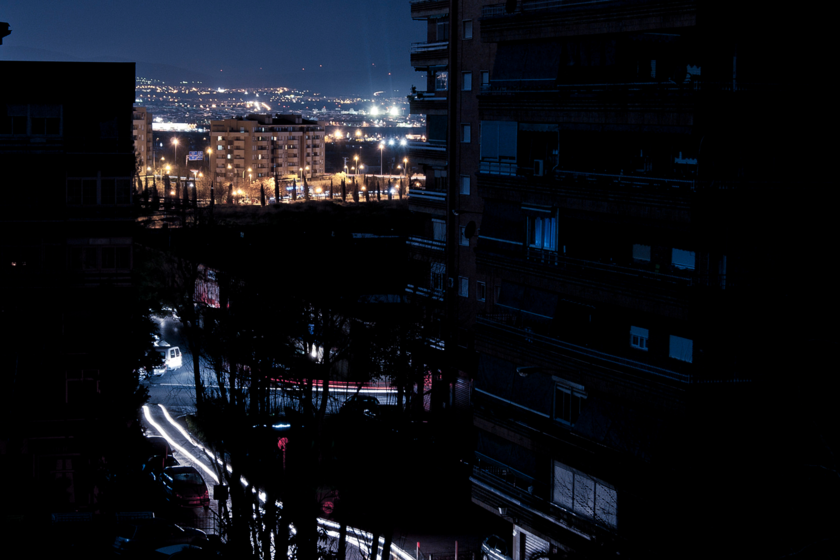In December we rescued a true story that possibly served Michael Bay for his film ‘La Roca’, set in the Alcatraz prison. Actually, it was not so impregnable, but the jail (now converted into a tourist visit space) has once again noticed because Trump considers the idea of recovering it as “home” for the most dangerous criminals in the United States. The truth is that, before Alcatraz, Mexico already had such a prison.
From prison to sanctuary. For more than a century, the Marias Islands represented the confinement, exile and hardness of the Mexican prison system. A story that changed from the definitive closure of its prison in 2019, when the remote archipelago in the Pacific began a surprising and unexpected transformation towards ecotourism and environmental conservation.
Located about 130 kilometers from the coast of Nayarit, the four islands, and in particular María Madre, went from being the last insular criminal colony of America to become a biosphere reserve managed by the Mexican Navy. In 2022, organized visits began for tourists under strong security measures and with limited routes, where visitors can travel both the wild nature and the historical traces of a prison past full of dark stories. Penitentiary facilities still visible (such as cells, surveillance towers and a maximum security module) are now combined with hotels, trails, lush vegetation and endemic species that have survived thanks to isolation for millions of years.
Buy Chinese brands” width=”375″ height=”142″ src=”https://i.blogs.es/2cb69a/china2/375_142.jpeg”/>
Violence, punishment and resistance. Founded as prison in 1905, the Marías Islands housed many of the most dangerous criminals in the country, together with political dissidents, poor peasants and religious leaders during different historical stages. There were also opponents of the Government of Álvaro Obregón, Catholics in times of the Cristero War, and figures such as the writer José Revueltas, symbol of intellectual dissent.
The prison regime varied over time, from semi -liberated modalities in which some inmates lived with their families, to closed structures such as the maximum security section open in 2011 after the militarization of the criminal system during the war against the narco. In these facilities, described as replicas of American prisons, prisoners lived with extreme punishments, such as the existence of a metal cabin that functioned as a solar heat torture chamber. In fact, the BBC had that rumors still persist of undercover executions and clandestine burials in the other islands of the archipelago, occasionally frequented by illegal and drug traffickers.
Overpopulation During the last decades of operation as a prison, serious overpopulation episodes were experienced, particularly notorious in the 2000s. According to Los Angeles Times and testimonies collected by Mexican means such as El Universal and Process, at some times they came to live more than 8,000 inmates in precarious conditions, in facilities originally designed to house much less.
An especially shocking example was reported by a former inmate who, in 2022, recalled that 500 women shared only five bathrooms, a situation that described how to live in a “chicken coop.” Although as we said, in the beginning the prison had a relatively open regime (even allowed some inmates to live with their families), the hardening of penitentiary policy after the war on drug trafficking in 2006 and the opening of the maximum security module aggravated overcrowding. The complaints of insufficient rations and lack of medical care even derived in a riot in 2013, after which the module closed. The combination of structural deterioration, lack of resources and social pressure ended up leading to the definitive closure of the prison in 2019.
Biodiversity Then came the “second life” of the islands. Despite its gloomy legacy, the natural wealth of the archipelago has survived and even flourished. Since 2010, when the prison still worked, UNESCO recognized the Marias Islands as a biosphere reserve for its unique ecosystem, composed of dry forests, mangroves, coral reefs, coasts and endemic fauna such as the three marías, mapaches and rabbits that do not exist anywhere else on the planet.
Many of these species suffered during the penitentiary period (they say that some inmates hunted snakes to make belts or trafficked parrots with the help of family members). Today, the National Commission of Protected Natural Areas (Conanp) works with the Navy to protect this biodiversity, although the challenges are maintained, especially for illegal fishing. Despite the restrictions imposed since 2000 and reinforced in 2021, scientists such as the Marine Biologist Octavio Aburto-Oropeza warned that companies that offer recreational fishing or with harpoon without effective control are still operating, which puts at risk the fragile ecological balance of the area.
Tourism (responsible). Today, visits to María Madre have become a strange mixture of biotourism and historical memory. Tourists, mostly Mexicans, are attracted to both the wild environment and the history of suffering inscribed in cells, corridors, murals and cemeteries. It was explained by the BBC with examples, such as the tomb of “El Sapo”, an alleged state murderer murdered to machetes by their cellmates, or the escultures of octopus made by inmates that decorate still closed rooms, episodes that generate an environment between the surreal and moving.
In short, although the current approach gives priority to contact with nature and environmental education, the main attraction for many remains the same as in Alcatraz: the possibility of walking for what was once a penitentiary hell. Thus, in the experience of the visit two stories live together: that of an infamous prison that functioned as a tool for social control and repression for more than a century, and that of a resilient ecosystem that now seems to offer a promise of redemption through responsible tourism and collective memory.
Imagen | Vallee, RawPixel
In WorldOfSoftware | The incredible story of the men who escaped from the Alcatraz prison with spoons, false hair and a homemade boat
In WorldOfSoftware | The Japanese who built a replica of his cell in his garden because his sentence seemed little: he did not get out of there again










